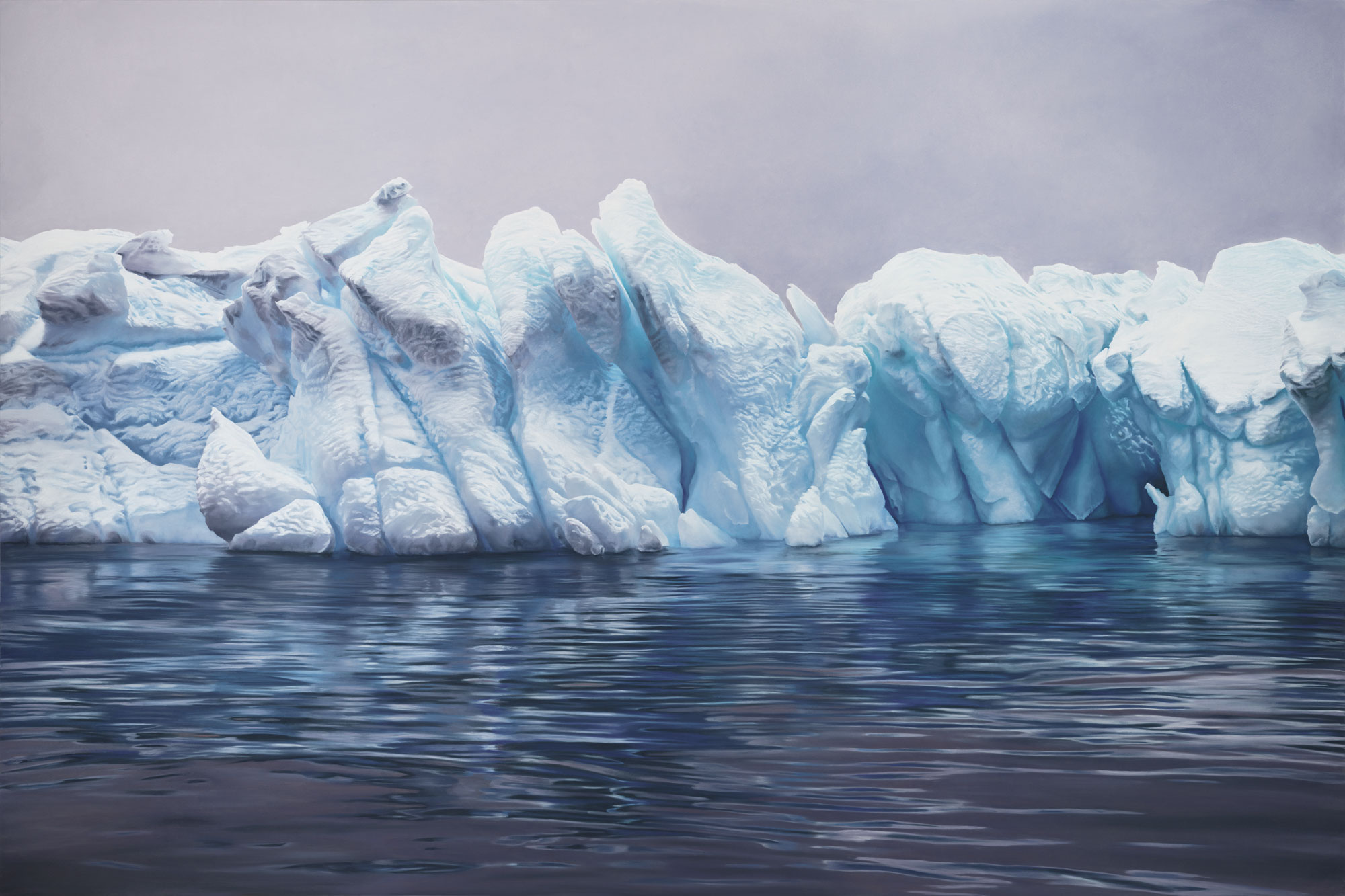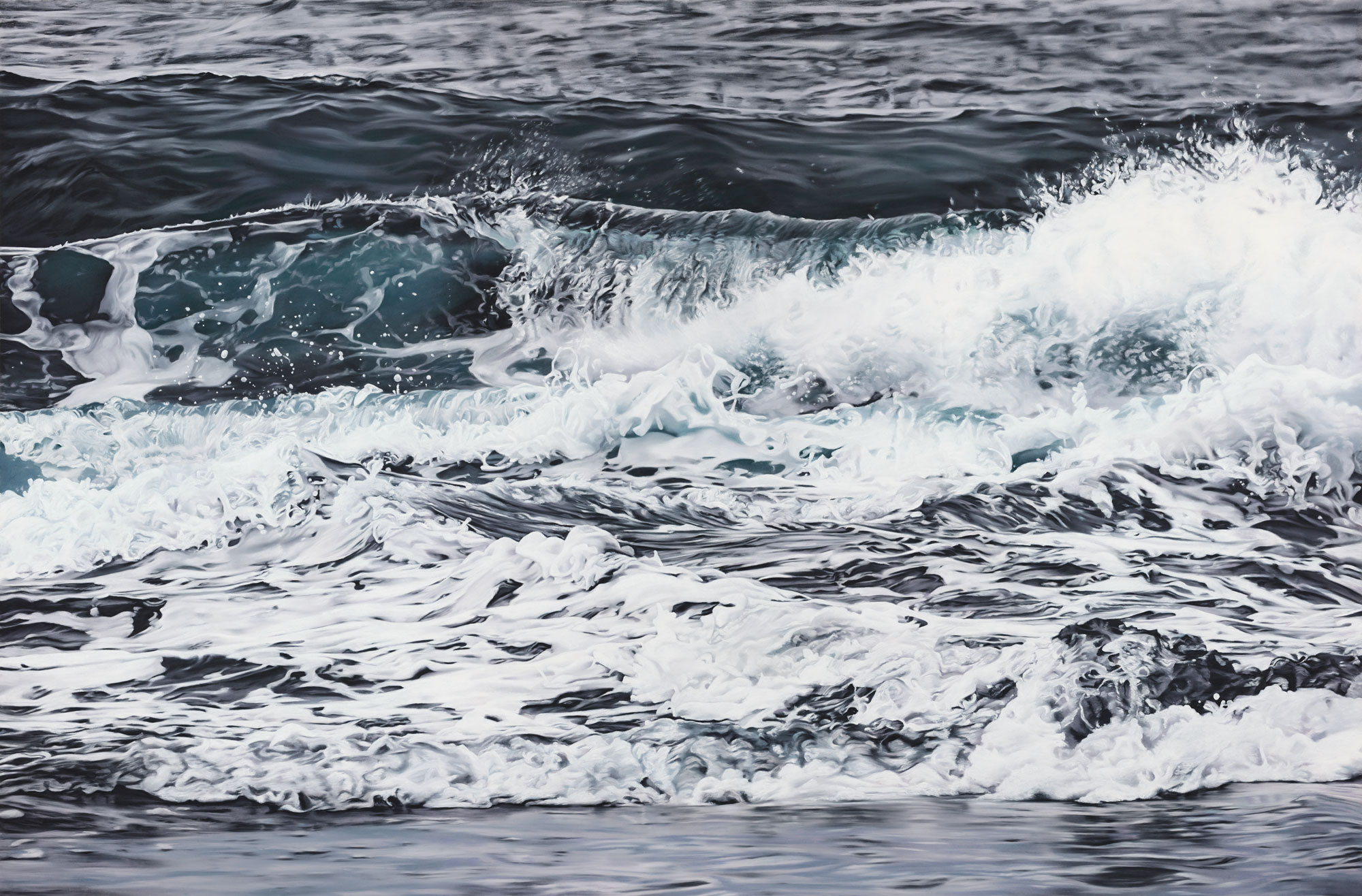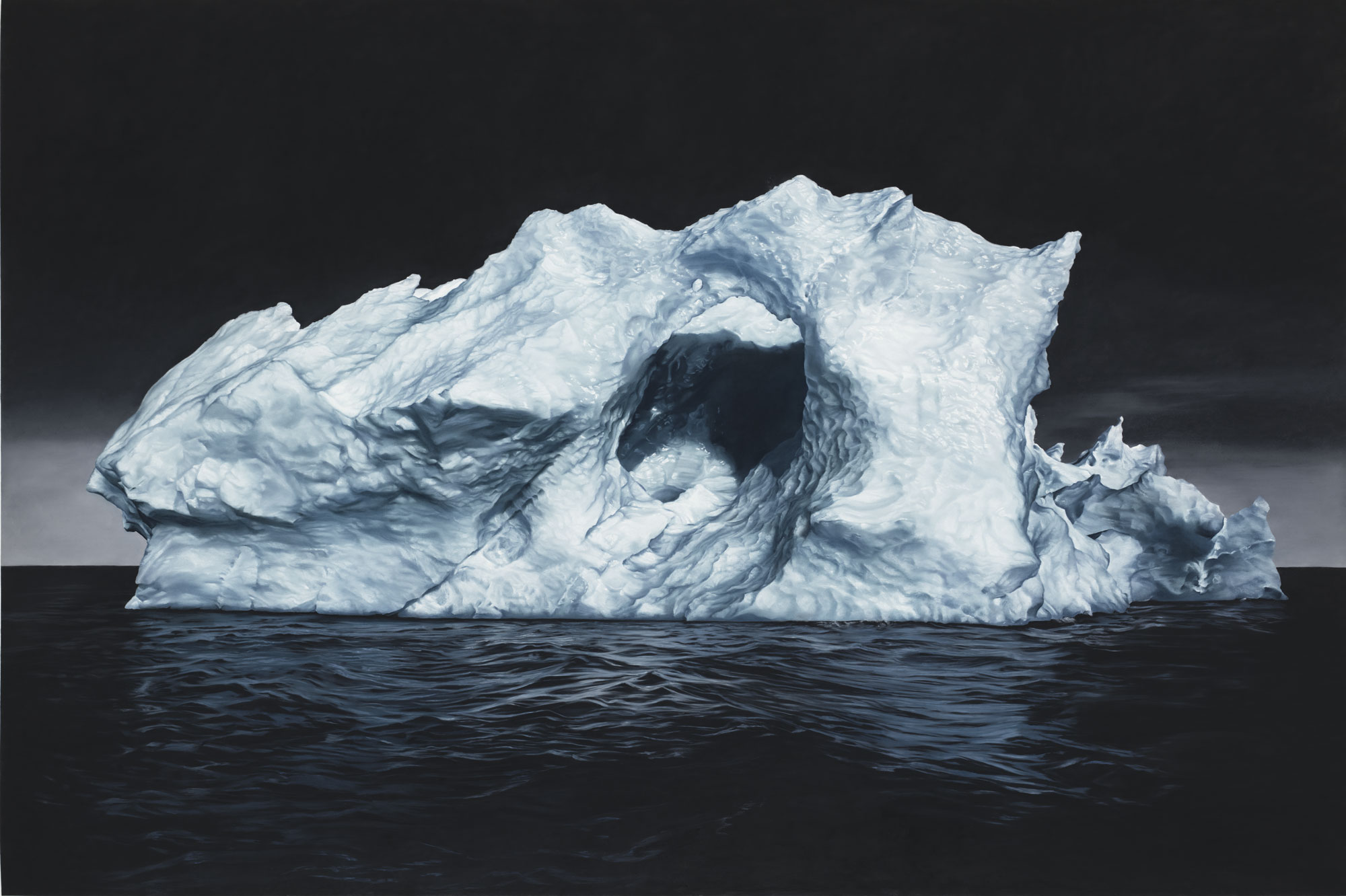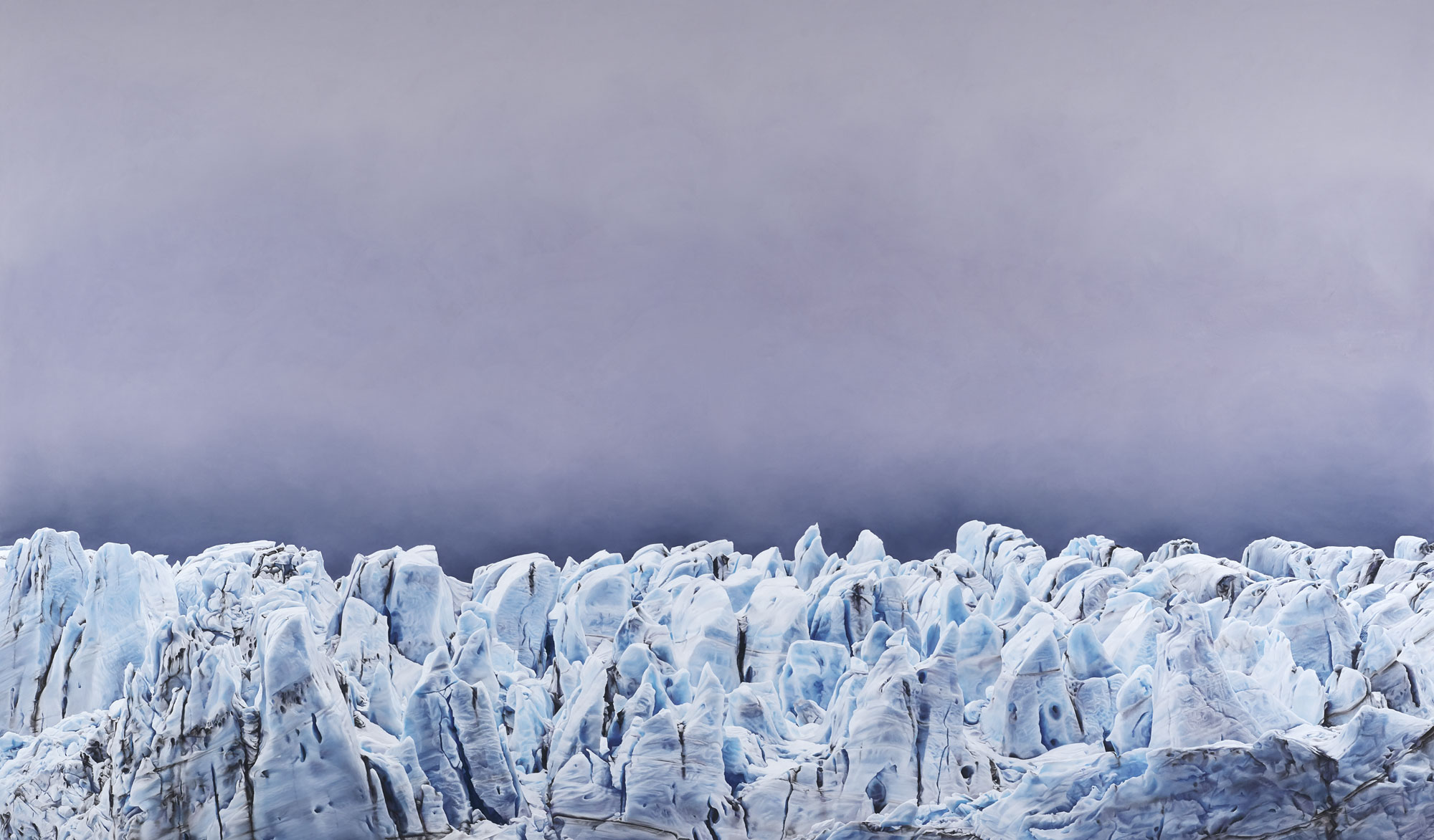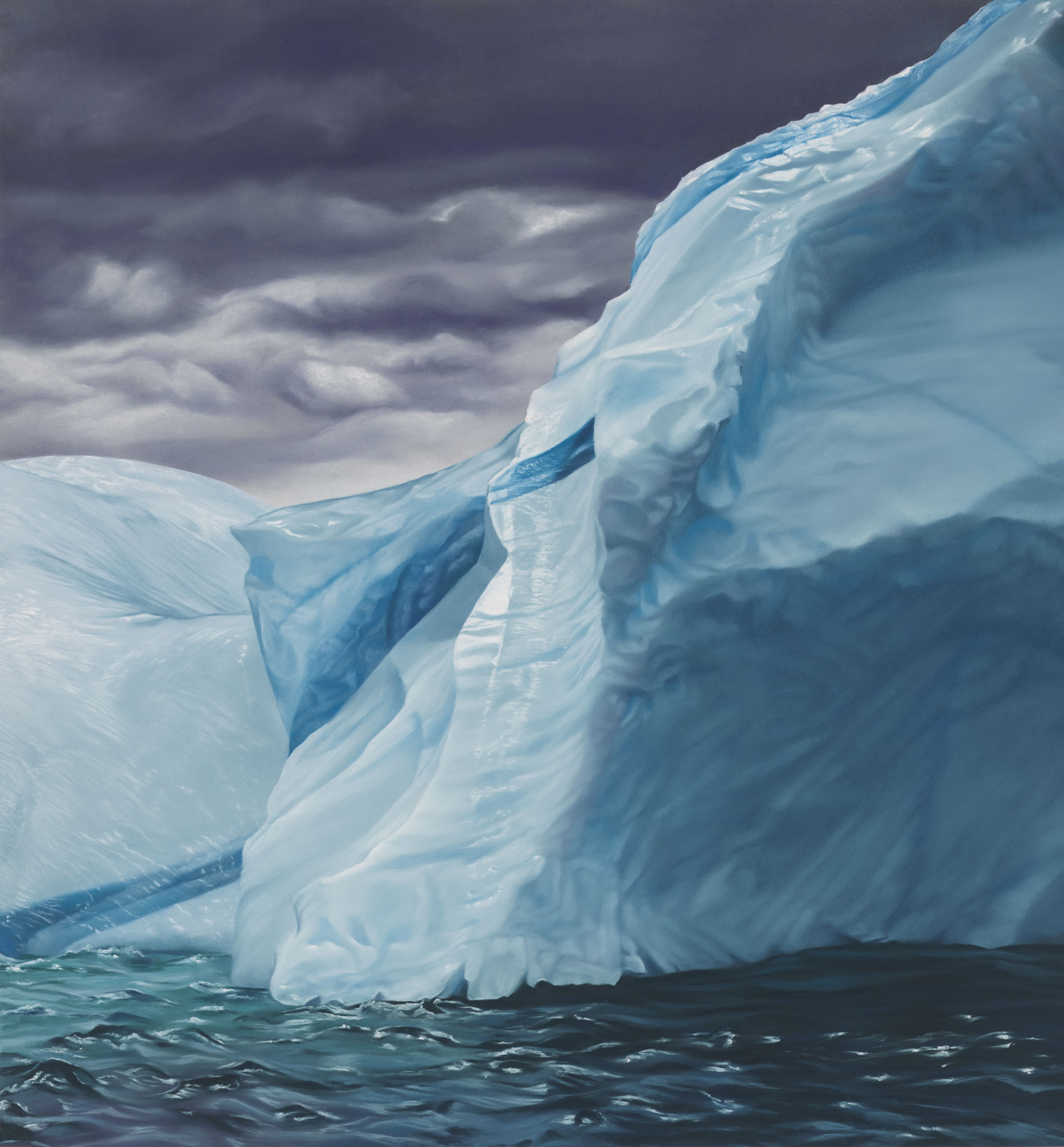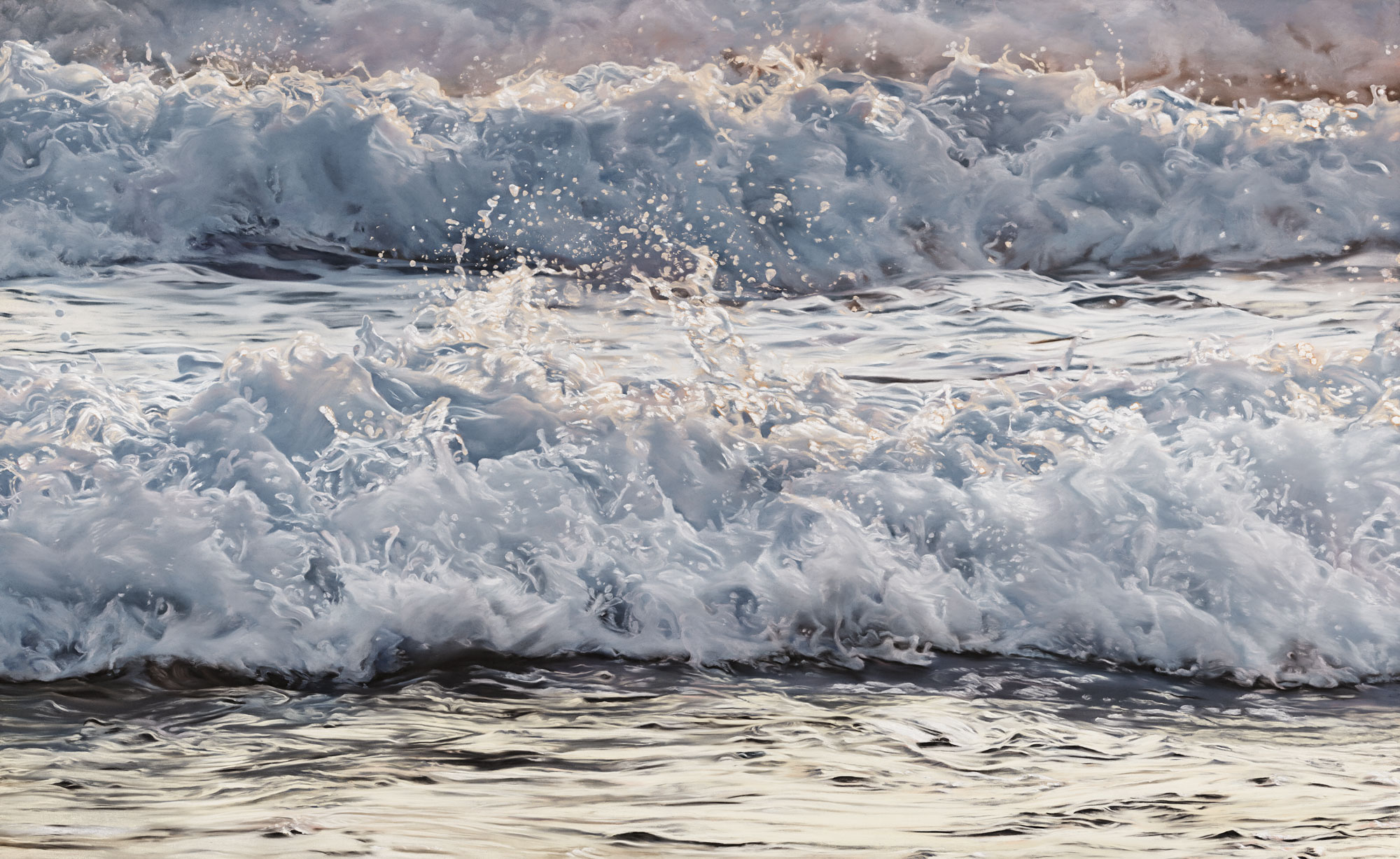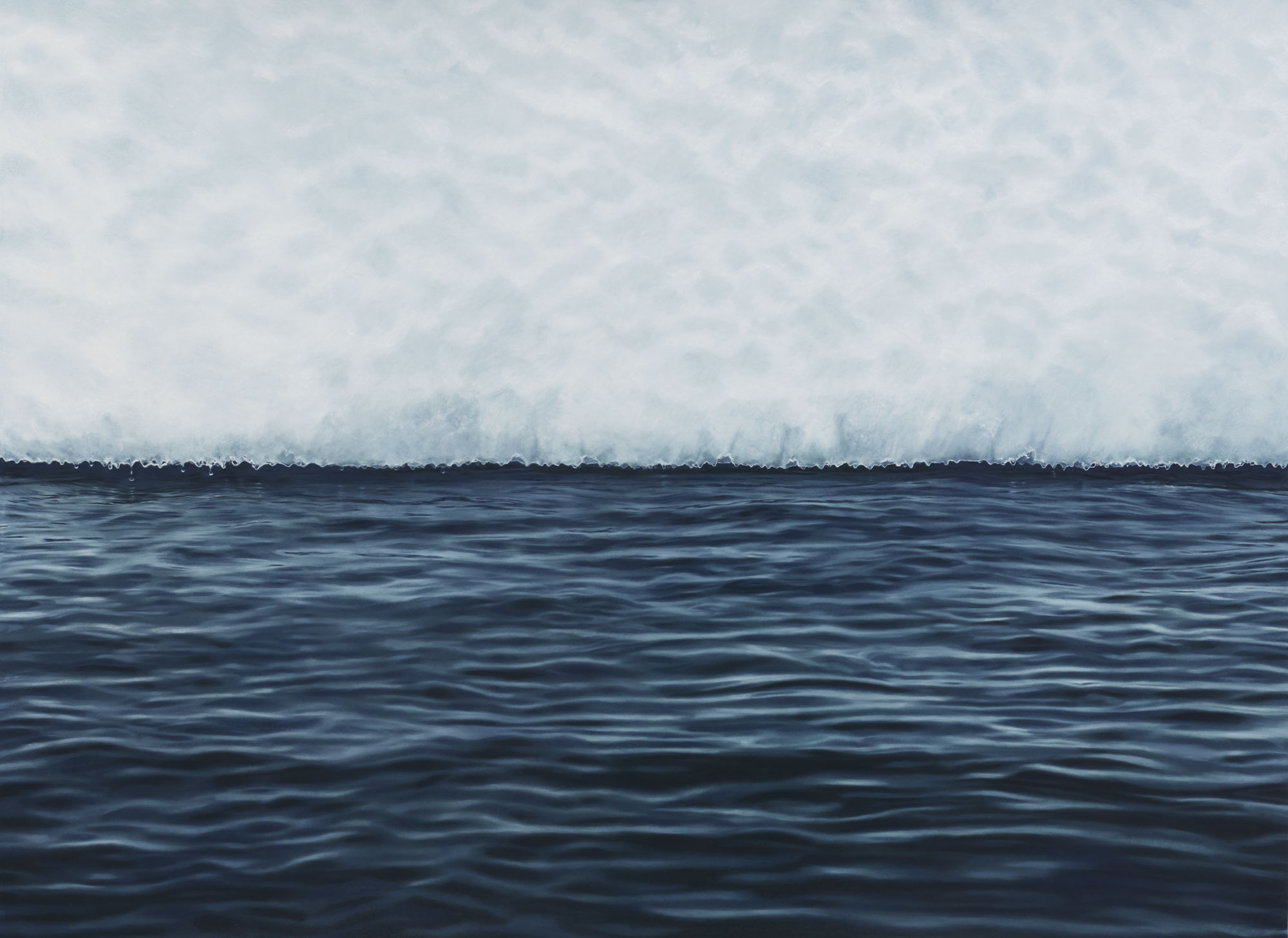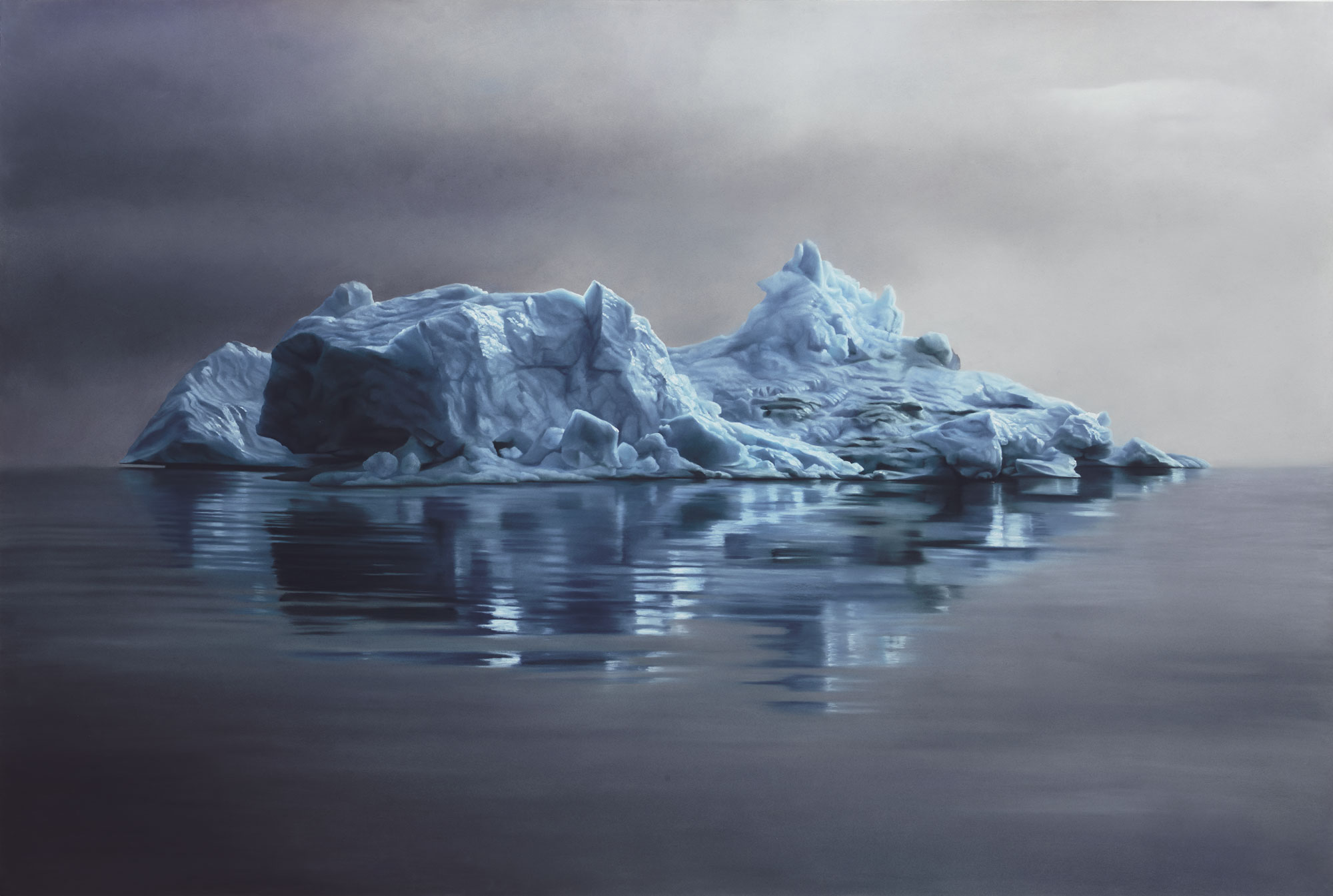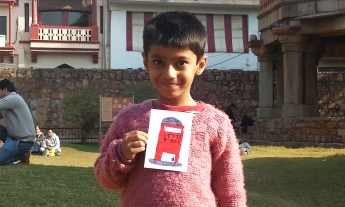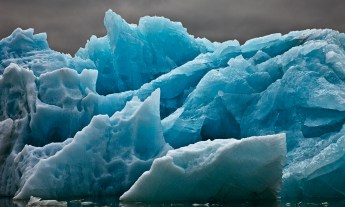Artist Zaria Forman travels thousands of miles to collect source material for drawings that portray the beauty and fragility of the world. Her goal? To help people experience the sublimity of these landscapes, so they’ll be inspired to protect and preserve them.
Zaria Forman has nothing against photography. On her expeditions to the furthest corners of the Earth, she takes hundreds of photos in her efforts to document places afflicted by climate change. But that’s just the beginning of her process. Once she’s back in her studio, these images are transformed into something much more personal, as she creates hyper-realistic pastel drawings designed to express her own emotional and visual experience of these glaciers. Below, she sheds some light on her creative process, talks about the dangers of climate change, and shares some iceberg lingo for good measure.
Whale Bay, Antarctica
The icebergs in Whale Bay, glowing iridescent blue and decorated with wind-whipped patterns, are not long for this world. “They call them iceberg graveyards,” Forman says of this bay and several others in the region. “Basically, the way that the glaciers in the bay are situated is such that when the icebergs break off, the current pulls them into the bay, and if they’re big enough, they get grounded.” This leaves the icebergs stuck there until they’re eroded away by the wind. “They get moved and sculpted by the wind and the water and they turn into these incredible shapes that are really nature’s hand at work as a sculptor,” says Forman.
Waipi’o Valley, Hawaii
The inexorable drama of nature is front and center in this picture of waves in Hawaii. “The broader theme of my work is to focus on the powerful forces of nature,” says Forman, who says she finds it impossible to be near the ocean without being inspired to make drawings. “These forces can help put things that are going on in our lives that seem really big into perspective.”
Svalbard, Norway
This climate-charged image featuring a visibly melting iceberg cast against foreboding black skies and murky water, was based off a photograph by a friend and fellow artist, Todd Murphy. Forman has used a few of his images as a starting point for her work — and some others taken by her late mother Rena Bass Forman, who photographed the Arctic from 2001 until she died in 2011. “I have this goldmine of my mother’s contact sheets,” she says. “She always wanted me to draw from her photos before she died, and I never wanted to, but now I am grateful to have the means to collaborate with her, even after her passing.”
South Georgia, Antarctica
This drawing captures the top of a nameless glacier, where fingers of protruding ice are striped with brown firn lines caused by the tips of ice melting between two periods of snowfall. The different levels of ice and sediment create thin lines which crisscross the glacier. Remarkably, Forman uses no tools to create her drawings, instead using her fingers and palms to manipulate soft pastels on paper.
Newfoundland, Labrador
Maldives
As sea levels rise, small island nations such as the Maldives sink deeper into the ocean. Forman is as happy on a beach as she is in the cold tundra although, she says, “the techniques that I use to create water versus ice are very different.” After all, where ice is typically still, the dynamism of waves crashing on a beach offer a new challenge.
Maldives
In this drawing of the Maldives shoreline, Forman worked from photos taken with a wide-angle lens to try to convey the reality of a drowning nation. “I turned my lens directly towards the water, and basically got everything in front of me except for my toes,” she says. “It’s a close-up perspective of the sand ripples underneath the water, quite literally showing a drowning island.”
Lemarie Channel, Antarctica
“Even though the drawings are highly detailed, and therefore pretty complicated, I try to keep the composition as simple as possible so it doesn’t require much interpretation,” says Forman. “The viewer can look at it, understand it and have a feeling about it. Not all of her work is easy to decode. This piece is a somewhat abstract study of the bottom lip of a melting iceberg. “I love that if you squint a little bit, it can look like it’s actually sky and water, not ice at all.”
Greenland
This ominous piece prominently features the debilitating effects of climate change, with its moody, overcast clouds and the calving corner of this iceberg heightening the drama. But, Forman is quick to point out, this is not an exaggeration of what’s taking place in nature. “While the grandeur of the ice is evident, so, too, is its vulnerability. From our boat, I could see the ice sweating under the unseasonably warm sun,” she says.
Greenland
Scale is an issue. “Viewers can’t tell how immense the icebergs actually are,” says Forman. “But if I were to draw a little animal, a penguin or a seal or something in the image for reference, it would shift the focus of the composition.” Ultimately this challenge provides more fun than frustration. “This particular iceberg was actually just a little chunk of ice,” she confesses. “It wasn’t that big, but I love that you can’t tell.”

